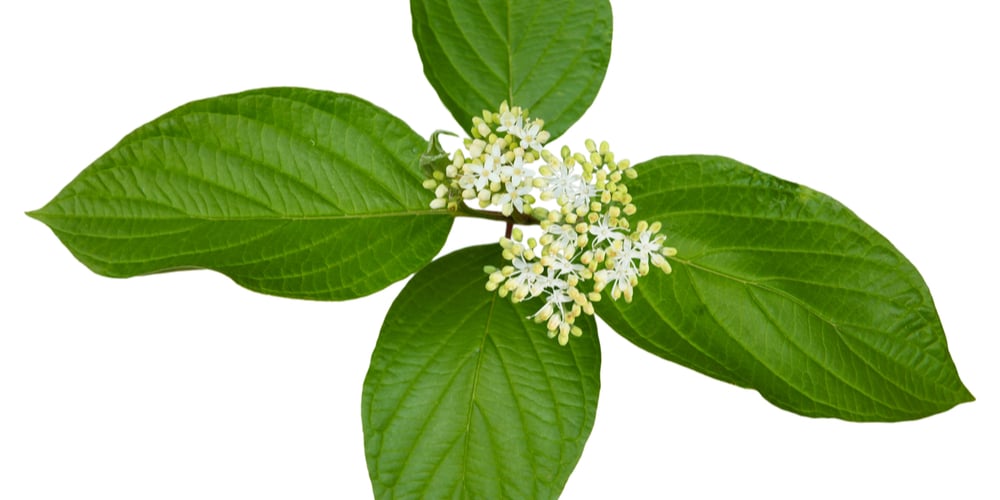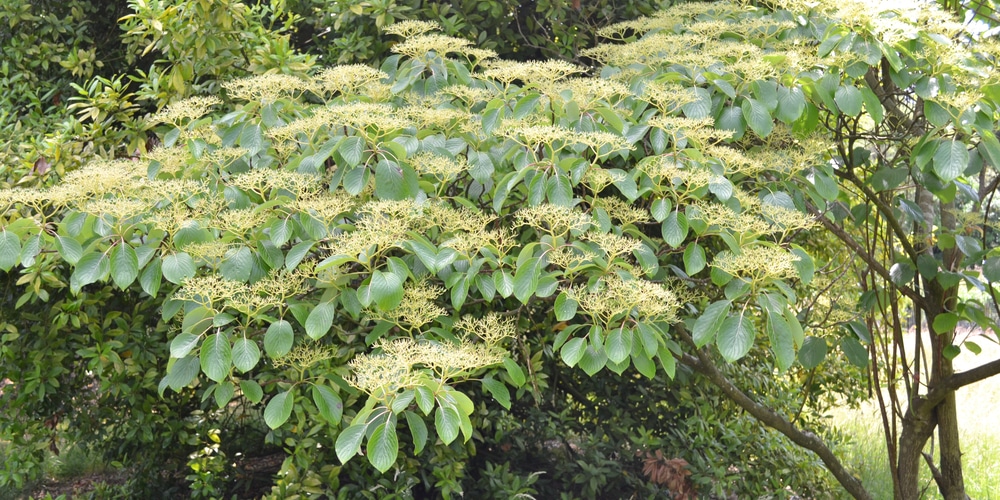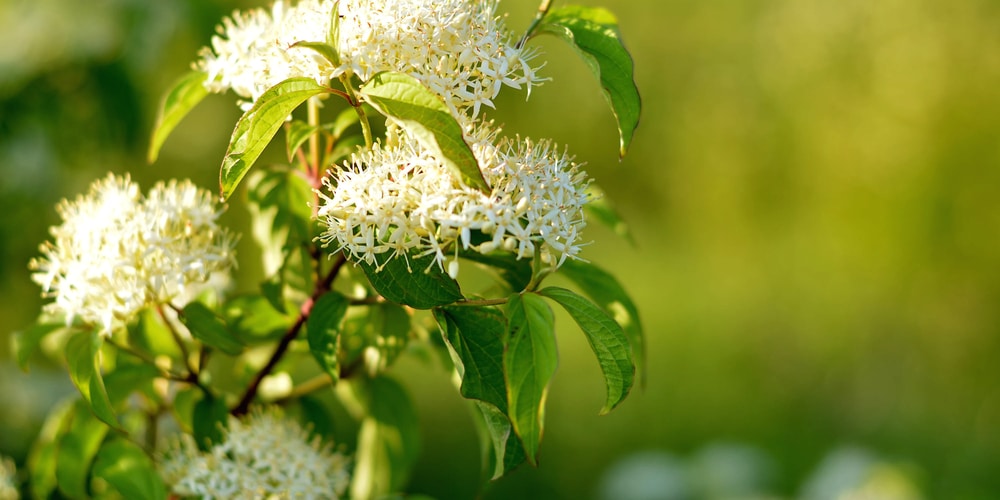Landscaping isn’t all about lush green grass and beautiful flowers blooming cheerfully during the spring and summer months. It’s also about making your yard look great in the fall and winter when everything else is dying back.
It’s about striking the right balance between function and form. And it’s about having a little bit of everything, including some unique trees that will add interest and beauty to your property all year long.
One tree that fits this description perfectly is the pagoda dogwood (Cornus alternifolia). This lovely specimen is native to Wisconsin’s woodlands, Asia, and North America.
It’s also relatively low, making it an excellent choice for anyone who wants to add a touch of the state’s natural beauty to their yard. It’s a large shrub that brings a touch of elegance to any landscape with its tiered branches and beautiful flowers.
Pagoda Dogwood: Growing Characteristics

Adding a bit of pagoda dogwood to your landscape is a great way to add interest and texture. The tree gets its name from its unique branching pattern, which resembles the tiers of a pagoda. It’s a slow-growing tree that can reach up to 15 feet tall and 20 feet wide at maturity.
This shrub is perfect for those who want to add a touch of uniqueness to their yard without having to worry about it taking over. It’s also a great choice for small yards since it doesn’t get too big. Its slow growth rate also means that it doesn’t require a lot of maintenance.
Aside from its interesting form, pagoda dogwood is also known for its lovely flowers. The blooms are small and white, but they’re borne in large clusters that make a dramatic impact. They appear in early summer and are followed by blue-black berries that attract birds and other wildlife.
During the winter, the pagoda dogwood’s tiered branches provide interest and beauty. The tree’s bark is also a lovely shade of gray that looks great against the snow.
Pagoda dogwood is a deciduous tree that is relatively easy to maintain. This means that it’s an excellent choice just about for anyone who wants to include a bit of texture in their yard.
Pagoda Dogwood: Planting and Care Instructions in Wisconsin
This Wisconsin-native tree is a popular choice for many homeowners. Thanks to its upright form, broad spreading branches, and lovely flowers, it’s easy to see why.
Hardy in zone three, pagoda dogwood is a tough tree that can handle just about anything that Wisconsin throws its way. It’s adaptable to a variety of soil types and does best in full sun to partial shade. Although this large shrub (or small tree) thrives in moist conditions, it’s also surprisingly drought-tolerant.
While it can adapt to different soil types, it does well in a slightly acidic environment, making it a good choice for those who want to grow it in their yard. It doesn’t require too much fertilizing, but adding a bit of compost to the soil before planting is always a good idea.
What makes this plant even more interesting is that it thrives just as well when you either plant it in full sun or full shade. That’s pretty rare for most plants!
When you’re ready to plant your pagoda dogwood, here are some things to remember:
1) Carefully Select a Good Location for Your Tree
Although it thrives both in the shade and sunny areas, it’s important to give some thought to where you plant your pagoda dogwood. Consider the size of the tree when it’s fully grown, and make sure you have enough space. You also want to make sure that the location you choose won’t interfere with power lines or your home’s foundation.
It is a small tree, but a tree nonetheless.
2) Transplant During the Right Season
The best time to transplant pagoda dogwood is in the spring or fall. This gives the tree a chance to adjust to its new home and get settled in before the hot summer weather arrives.
The best way to get started with a pagoda dogwood is through seedlings. If you’ve already got a mature tree, you can propagate it by taking cuttings from the tips of its branches.
3) Make Sure the Soil is Loose and Moist
As you’re preparing the hole for your tree, make sure the soil is loose and moist. This will help the roots to spread out and establish themselves quickly. Once the tree is in the ground, water it well and keep an eye on it during hot, dry periods.
Pagoda dogwood does best in moist, acidic soil. If your soil is too alkaline, you can lower its pH by adding some sulfur to the area where you’ll be planting. Good sulfur alternatives include peat moss, aluminum sulfate, and iron sulfate.
Adding some compost to the hole before planting is also a good idea. This will help improve drainage and add essential nutrients to the soil.
4) Fertilize in the Early Spring
Pagoda dogwood doesn’t require a lot of fertilizer, but a little bit in the early spring will help it to grow and flourish. Look for a fertilizer that’s high in phosphorus and low in nitrogen. This will encourage blooming and help your tree develop a strong root system.
5) Prune in the Late Winter
Considering its size, pagoda dogwood doesn’t require a lot of pruning. However, you may want to give it a light trimming in the late winter to remove any dead or damaged branches.
Pagoda dogwood Wisconsin: Final Thoughts
A top choice for many Wisconsin homeowners, pagoda dogwood, is a beautiful, tough tree that’s easy to grow. Thanks to its adaptability and ability to thrive in both sun and shade, it’s an excellent option for those who want to add some interest to their yard.
If you’re looking for a native plant that’s sure to make a statement, pagoda dogwood is definitely worth considering!

